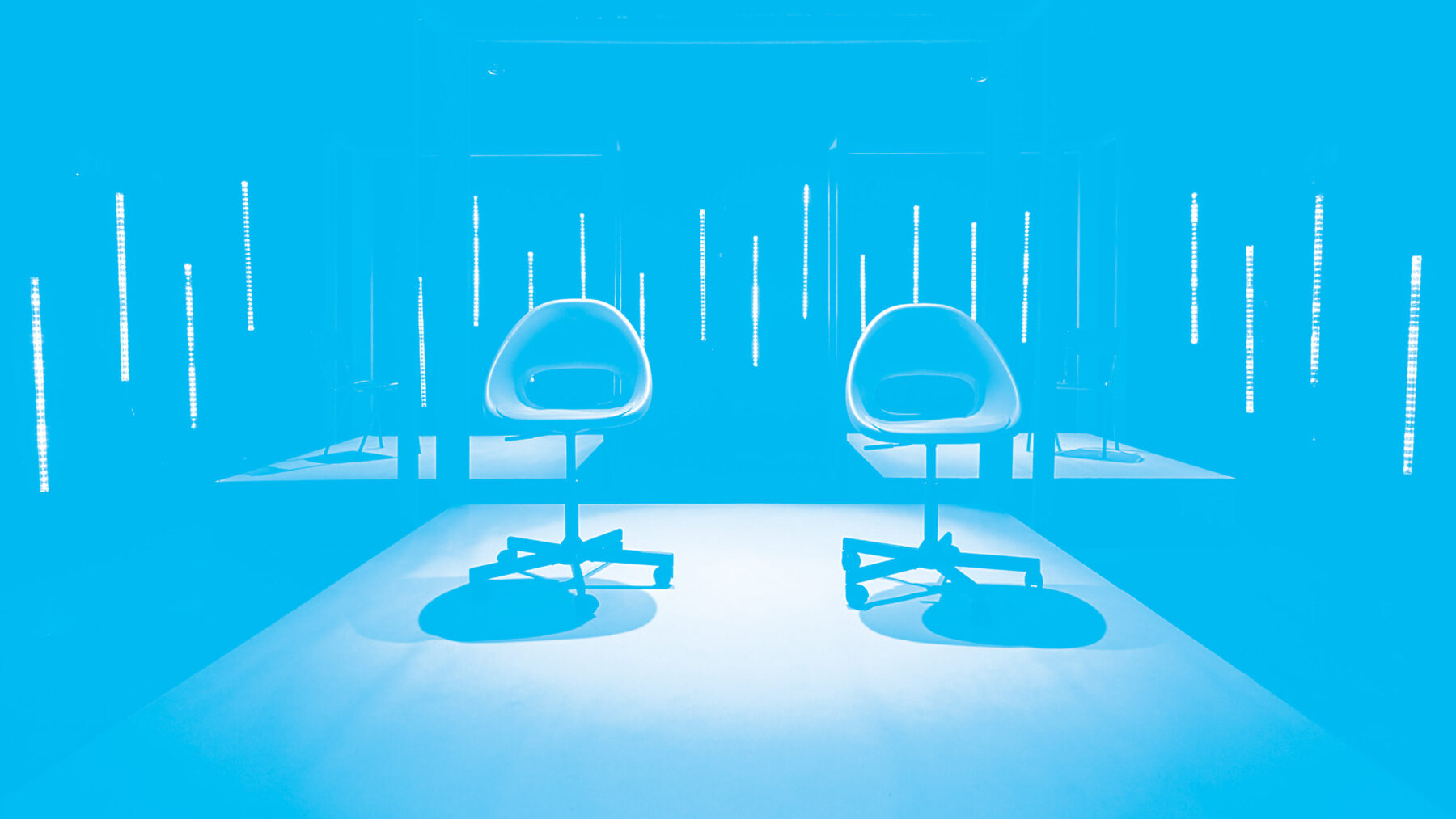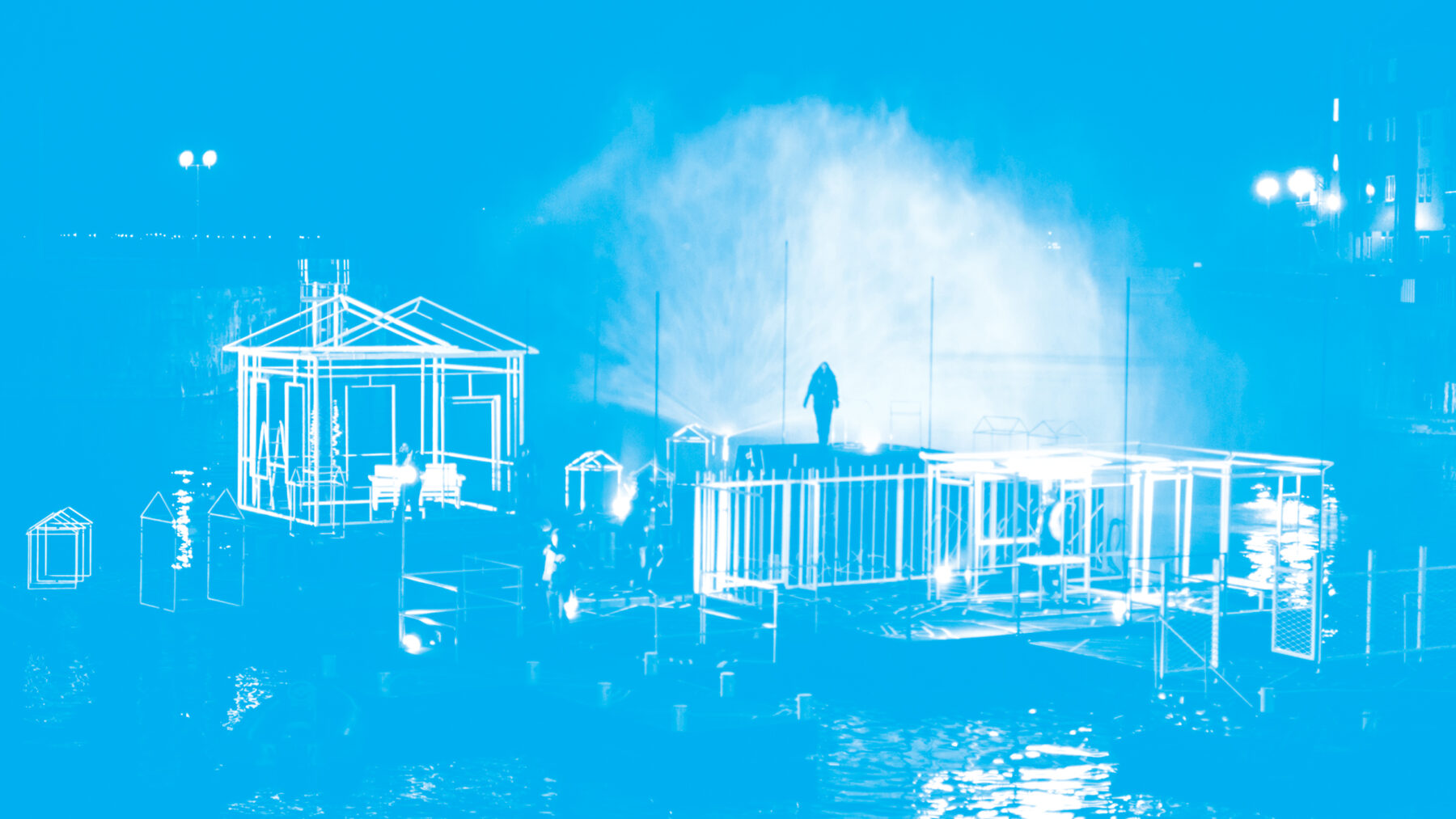Image Credit: Public Domain, live streamed from Southwark Playhouse. Designed by Libby Todd. Photo by The Other Richard
by Libby Todd
As the moment when theatres reopen draws ever closer, more and more of us are back to work. Back in rehearsal rooms. Back in theatres.
It’s fair to say we’re all pretty excited. But I have to admit I also feel a bit hesitant. As much as I’m enjoying working and collaborating again, the phrase “back to work” makes me anxious. Do we really want to go back? Is “back” really the best word to use?
Over the past year the mainstream dialogue about theatre has been that it is “missing”. Absent. In a kind of strange prolonged hibernation. It turns out that the show can’t always go on.
Except, we found that it can, and it has. Just in ways we never imagined before.
At the start of the pandemic, when no theatre buildings were open, there were shows made on Zoom and watched on Youtube. As the months went by many theatre buildings did reopen, transforming themselves into streaming studios, navigating social distancing and moving outside of their walls to make work. Some bravely ventured into the worlds of virtual reality, reimagining what a performance space is, and how an audience engages with a play.
I have been lucky enough to have made work during the past year. I can honestly say I have learnt more about myself, developed more skills and opened more doors for future projects over the past 12 months, than any other year in my career. Because as much as having to make work differently is scary, it’s also gives you an incredible freedom to create. We had never made theatre like we have in the past year. We’ve been rewriting the rule book.
And I would argue this expansion of what theatre can be has made it more accessible, more diverse and more forward thinking.
This is why I don’t want to go back. I don’t want to forget all we have learnt and all we have done since the start of the pandemic.
“As weird and as horrible as this time has been, if we embrace what we have discovered and how we have adapted, we can build an industry stronger and more exciting than before.”
If we focus on what theatre has achieved over the past year, the results are staggering. Yes we had live streamed performances before. But not on this scale, and not so widely into people’s homes. The more companies have adopted streaming, the better the quality and consideration of the form. Gone are the days when it’s acceptable to stick a camera at the back of the auditorium and press record. Now dedicated teams are employed to capture shows from multiple angles and in a variety of styles.
I’ve worked on projects where video has been designed and overlaid on top of live streamed performance. Blending the real and the digital to create a hybrid performance style. I’ve watched shows where I can interact with the virtual environment that the performer inhabits. Shows where I have had access to behind the scenes content that is never offered when you go watch a show in a theatre.
Many would say that watching theatre on a computer or device isn’t the same as the live, in person experience. They are right. It’s not the same.
But just because it’s a different experience doesn’t mean it’s a worse one.
Streamed and digital theatre is not just a substitute for the real thing. It’s not simply something used to “make do” whilst our stages are dark. This new and exciting art form not only pushes us to make better, more exciting work. It also makes theatre more accessible.
More accessible for artists and young companies who simply can’t get enough funding to bring their work to stages. Imagine being able to make theatre without huge levels of investment. Imagine how much more exciting those shows could be, taking creative risks rather than financial ones. A show need not be limited by a tiny seating capacity or an inconvenient festival time slot. Your audience can be as large, and as far reaching as your ambitions, not your wallet.
Likewise, it’s also more accessible for audience. Whether it’s the high cost of ticket prices, living far away from venues, or having other responsibilities (or barriers) stopping you from attending – theatre that you can watch whenever and wherever you wish can only be a good thing. It will mean more shows accessible for schools and colleges. Work reaching all areas of the country, rather than only our town and city centres. Shows could tour virtually, saving huge expense and environmental impact.
In the past year I have had more friends and family watch my work than ever before. My friends with young children. My ninety year old Grandmother who lives in Spain. My sister with all of her uni. flatmates. People that would normally not have made it to London to see my show, either because they couldn’t or didn’t want to, all watched pieces of new and exciting theatre.
There will be those that worry by taking our work out of our theatre buildings and into people’s homes, that we are diluting or decreasing the value of the work. Would people still go to the theatre if they have the option of staying at home? Would they make the effort? I think they would.
Take football for example. Fans travel hundreds of miles and pay huge sums of money to watch their teams play. Much like our audiences travelling to the West End. But with football, if you can only afford to go to a match once a year, you can watch the rest of the games on TV. Paying for a subscription to various channels is definitely not as pricey as a season ticket.
Because of this accessibility to all games, and not just ones you can make in person, the reach and influence of the sport is huge. Walk into any school, office, pub or shop and you will find people with an opinion about football. Imagine if we could say the same about theatre?
Theatre, like sport, is rooted in a place of liveness and shared audience experience. This is also true for the world of gaming.
Virtual reality, augmented reality, digitally created landscapes and characters, are all part of entertainment for millions of people. As theatre has pushed itself out from the proscenium towards the virtual realm, we have an opportunity to reimagine how people experience performance.
The traditional way to watch theatre is passive. Sit quietly in a dark space. Don’t make noise, move around or get involved. We’ve already seen a huge increase in the popularity of immersive theatre and events. Virtual theatre could be the next step towards engaging new audiences and reaching more people with the stories we have to tell. Imagine being able to interact with other audience members, or even the performers. Imagine becoming a performer yourself. Just like immersive theatre, but virtual.
Theatre now has a chance to be something that really is for everyone. Whether your paying hundreds of pounds for the best seat in the house, or you are watching from the sofa of your own house. Theatre now, more than ever, can call itself accessible.
So that’s why I’m not looking forward to going back. I’m looking forward.
Join Libby Todd on Thursday 22nd April 16:30-18:00, who will be hosting a panel discussion looks at new working methods employed by Designers and other Theatre Makers over the past year, and how these will inform the future of making theatre. From working and collaborating remotely, to engaging audiences through streaming, to VR and embracing new technologies. The panellists will discuss some of their projects and reflect on new ways of working before a Q&A session.
Confirmed panellists include:
Frankie Bradshaw – Designer
Joanna Scotcher – Designer
Tom O’Brien – Director
Christina Fulcher – Movement Director
***Tickets are FREE and available on Eventbrite via this link.
See you there!


